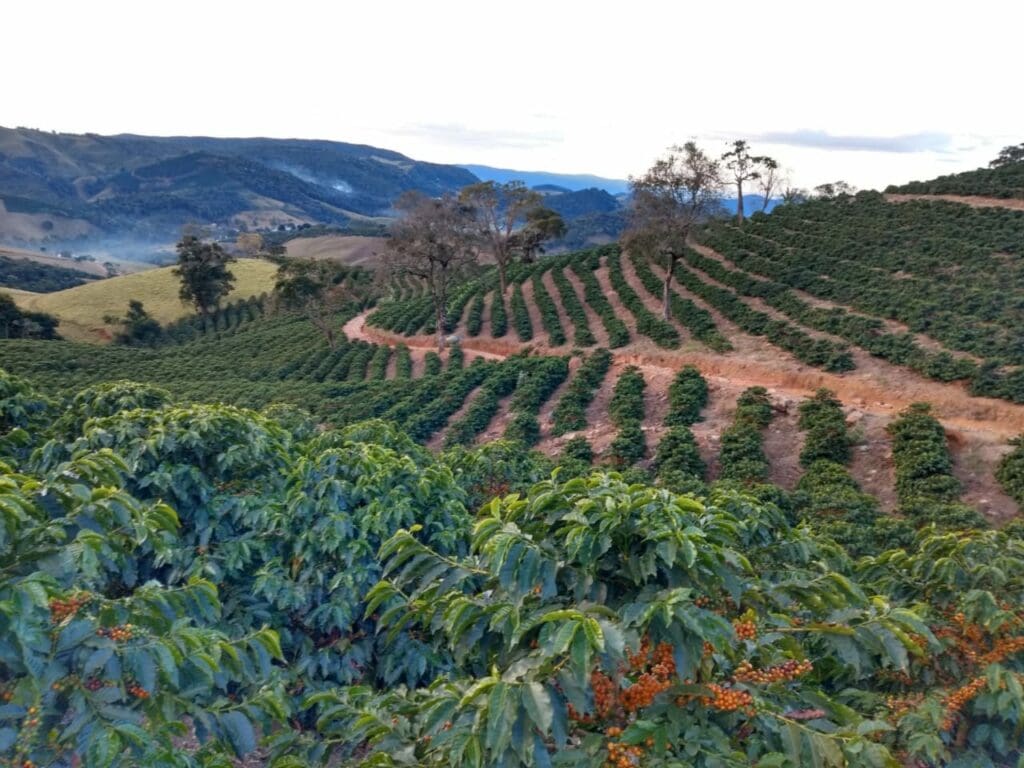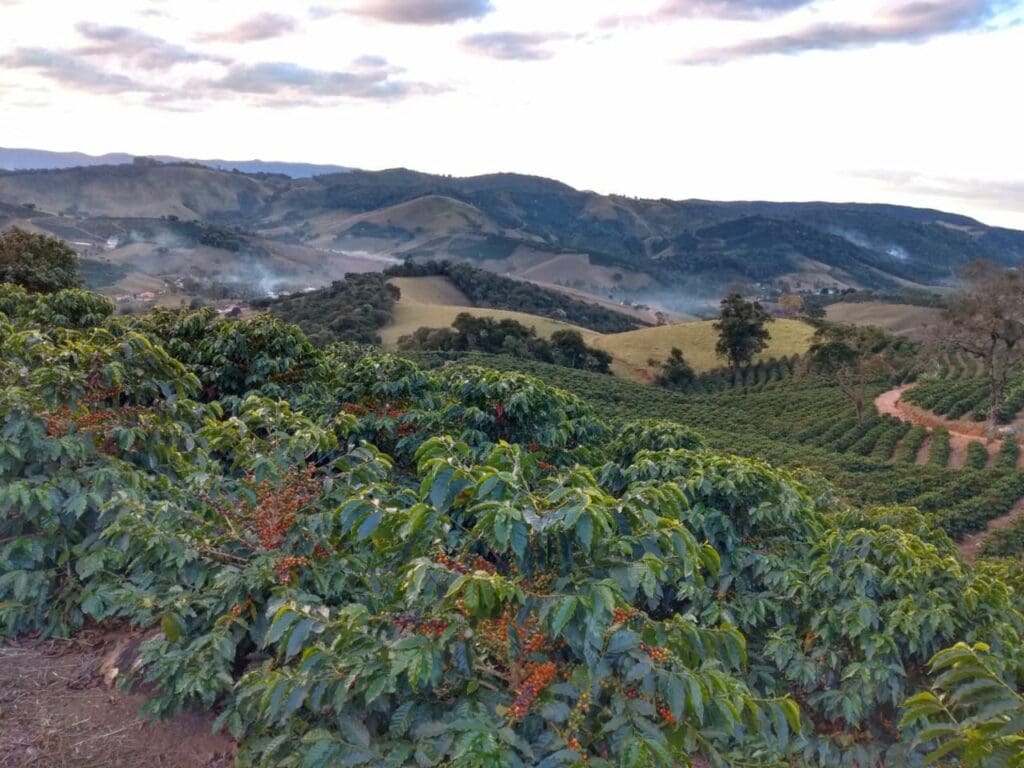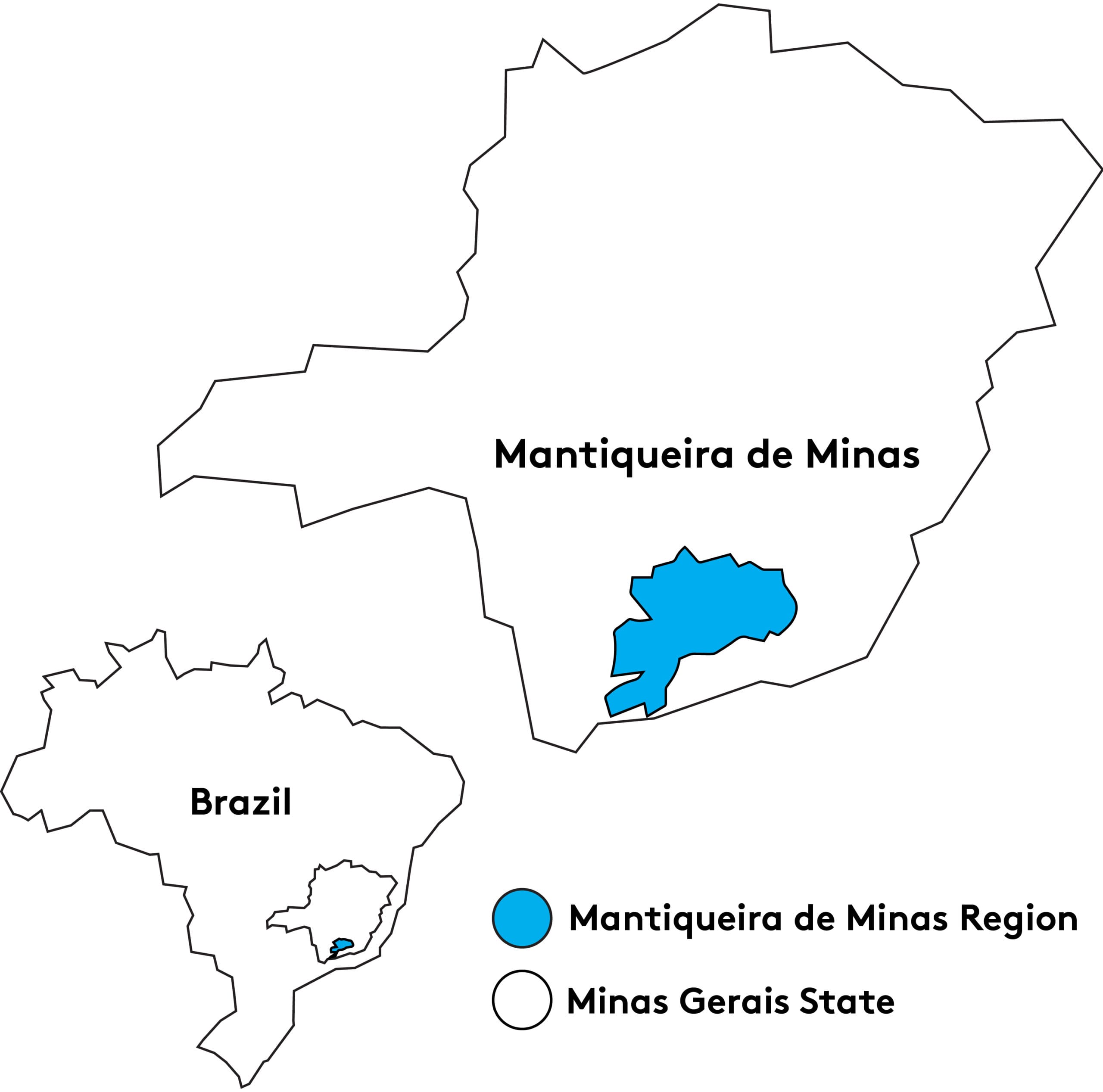Marcelo Edmar da Silva and Paulo Nelci da Silva come from a family tradition of farming. They received their first property as an inheritance and chose to continue in the family’s work. In 2002, Marcelo and Paulo decided to begin growing coffee and planted their first Red Catuai and Yellow Catuai trees, beginning their journey as coffee growers.
In 2016, the partners expanded their crop by purchasing Sítio Bananal in the Saint Barthélemy community of the Mantiqueira de Minas region. The farm covers 4.5 hectares planted with the same Red and Yellow Catuai varieties that they began their careers with.
This lot of Red Catuai coffee underwent Natural processing. Catuai was developed by the Instituto Agronomico (IAC) of Sao Paulo State in Campinas, Brazil by crossing Mundo Novo and Caturra varieties. Catuai coffees are cultivated widely across Brazil, and are known for their high productivity potential.




